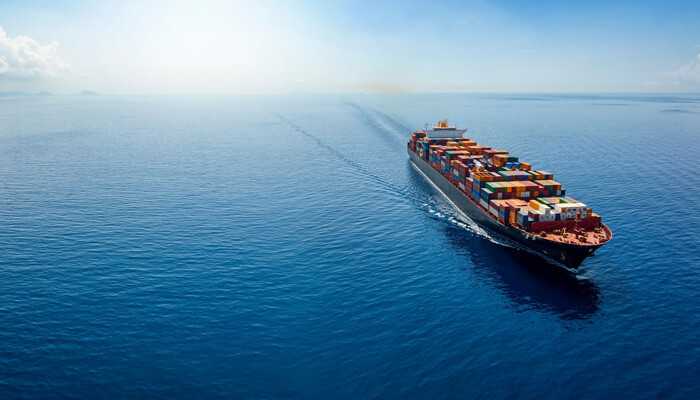Sea freight is a vital component of global trade, facilitating the movement of goods across continents with cost-effectiveness and significant capacity. Despite its advantages, the duration of sea freight can vary widely and be influenced by many factors. This variability often challenges businesses and logistics managers in planning and executing their supply chain strategies. But how long does sea freight take?
Read on to learn the seven factors that influence shipping time.
Understanding Sea Freight
Before exploring the factors influencing shipping time, a foundational understanding of sea freight is crucial. Sea freight, or ocean freight, involves transporting goods across seas and oceans using large cargo ships. Goods are typically packed into standardized shipping containers, which are systematically stacked and secured onto these vessels. This mode of transport is particularly favored for several reasons, such as the following:
1. Volume Capacity: Cargo ships are designed to handle vast amounts of goods, making them ideal for large shipments.
2. Cost Efficiency: Compared to air freight, sea freight offers substantial cost savings, particularly for non-urgent shipments.
3. Eco-Friendliness: Ships have a lower carbon footprint per ton of cargo than aircraft, making them a more environmentally sustainable option.
These attributes can make sea freight a preferred choice for businesses transporting bulk goods economically and efficiently. On the other hand, for those interested in exploring specific services tailored to their sea freight needs, they may check out options like Apollo Logistic sea freight, which offer comprehensive options that accommodate a variety of shipping requirements.
Key Factors Influencing Sea Freight Time
Navigating the complexities of sea freight requires understanding the numerous factors that influence shipping times. Below are the key factors that impact the duration of sea freight, offering insights for more effective logistics planning:
Port Congestion
Port congestion is a critical bottleneck in sea freight logistics, significantly delaying shipping. For instance, major global ports face immense pressure due to high traffic volumes and operational hiccups such as strikes, equipment failures, or administrative delays. When ships arrive and can’t access a berth promptly, they’re forced to wait in a queue, which can last from several hours to days, prolonging the delivery schedule.
Weather Conditions
The impact of weather on sea freight can’t be overstated. Adverse weather conditions such as storms, hurricanes, and typhoons can lead to significant delays, with ships stranded or forced to reroute to ensure safety. Shipping companies invest heavily in weather tracking technologies and route optimization software to predict and circumvent bad weather.
However, these reroutes can lengthen the journey time significantly, affecting delivery schedules and increasing operational costs.
Route Taken
The route a cargo ship takes significantly influences the duration of sea freight. Routes can vary in distance, and geographical challenges such as canals and straits can shorten and complicate a journey. For instance, traveling through the Panama Canal might cut down the distance significantly compared to sailing around South America. Still, it also involves canal tolls, potential queuing, and traffic delays within these narrow passages.
Customs And Clearance Procedures
Customs and clearance procedures are pivotal in determining the speed of sea freight operations. These procedures can vary widely across countries, with some having swift, automated processes and others having more cumbersome, manual inspections. Inefficiencies or rigorous inspections can delay shipments for days, particularly if paperwork needs to be completed or properly filed.
Type Of Goods Shipped
The specific nature of goods being transported has a profound impact on shipping times. Certain items, such as perishable goods, hazardous materials, and oversized or heavy cargo, require special handling and additional scrutiny, which can complicate loading and unloading processes. These goods may also be restricted to specific ships or routes, further limiting scheduling options and extending transit times.
Shipping Company And Vessel Availability
The availability of shipping companies and their vessels plays a crucial role in the timeliness of sea freight. During peak shipping seasons, demand for vessel space can outstrip supply, leading to significant delays and higher freight costs. Additionally, ship maintenance schedules can affect their availability, potentially taking them out of circulation at critical times.
Intermodal Connections
Sea freight often requires integration with other modes of transport, such as rail and truck, to deliver goods from ports to final destinations. Delays can occur at these intermodal transfer points, especially if they’re congested or if logistical disruptions occur within the domestic transportation network.
Strategies To Mitigate Delays In Sea Freight
To manage and potentially reduce delays in sea freight, shippers can employ several strategies:
1. Advance Planning: Booking shipments well in advance can secure space on ships and avoid last-minute scrambling.
2. Documentation Preparedness: Ensuring all documents are correct and complete before the shipment leaves the origin can minimize customs clearance delays.
3. Flexible Routing: Being open to alternative routes can help circumvent congested ports or adverse weather conditions.
4. Partnering with Reliable Logistics Providers: Collaborating with experienced and reliable freight forwarders can provide insights and alternatives that novice shippers might not be aware of.
By understanding these strategies, businesses can prevent delays in sea freight.
Conclusion
Numerous factors influence the duration of sea freight, each contributing to the variability of shipping times. By understanding these factors and implementing strategic planning, businesses can better manage their shipping schedules and mitigate potential delays. With efficient planning and a proactive approach, the challenges of sea freight can be substantially reduced, ensuring smoother operations in the global trade arena.





